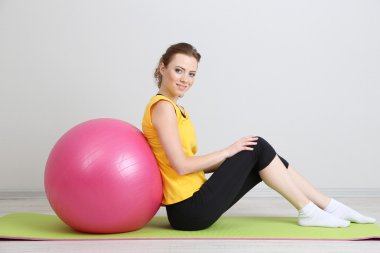
Can You Exercise With An Ovarian Cyst (4 Helpful Exercises)
Can you exercise with an ovarian cyst? Taking care of your health becomes a delicate balance when faced with the challenges of conditions like ovarian cysts, but understanding how to navigate exercise can be a crucial component in managing symptoms and promoting overall well-being.
Embarking on a fitness journey can be invigorating, but what happens when an unexpected guest, in the form of an ovarian cyst, decides to crash the party? Contrary to the instinct to hit the pause button on your exercise routine, navigating the realm of fitness with an ovarian cyst can be both a challenging and empowering experience.
Like a graceful dance, understanding the nuances of your body’s signals and choosing the right moves can transform this journey into a symphony of strength and resilience. So, lace up those sneakers and let’s explore the delicate art of exercising with an ovarian cyst, turning challenges into triumphs one step at a time.
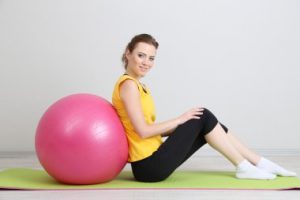
Can You Exercise With An Ovarian Cyst
Yes, it is generally safe to exercise with an ovarian cyst, but it’s crucial to listen to your body and choose low-impact activities. Always consult your healthcare provider for personalized advice.
Understanding Ovarian Cysts
Ovarian cysts are fluid-filled sacs that can develop on the ovaries. They are a common occurrence among women of reproductive age. While most cysts are benign and resolve on their own, some may cause discomfort or pain.
Low-Impact Exercise Options
Engaging in low-impact exercises is often recommended for individuals with ovarian cysts. Activities like walking, swimming, and cycling can help maintain fitness levels without putting excessive strain on the pelvic region. These exercises contribute to overall well-being and may alleviate symptoms associated with ovarian cysts.
Listening to Your Body
It’s essential to pay attention to your body’s signals when exercising with an ovarian cyst. If you experience pain, particularly in the pelvic area, it’s advisable to modify or stop the activity. This approach ensures that you can maintain an active lifestyle while prioritizing your health and well-being.
Consulting with Healthcare Providers
Before starting or modifying any exercise routine, it’s crucial to consult with your healthcare provider. They can offer personalized advice based on the type and size of the cyst, ensuring that your fitness activities align with your overall health goals.
Understanding Ovarian Cysts and Exercise
Impact of exercise on ovarian cysts
Enhancing Blood Circulation
Regular exercise can have a positive impact on ovarian cysts by promoting enhanced blood circulation. Engaging in physical activity helps improve overall cardiovascular health, leading to increased blood flow to various organs, including the ovaries. This improved circulation can aid in reducing the size of ovarian cysts and alleviating associated symptoms.
Additionally, exercise contributes to the regulation of hormones, such as insulin and cortisol, which play a role in ovarian cyst development. The release of endorphins during exercise also helps manage stress, which can be a contributing factor to hormonal imbalances.
However, it is crucial for individuals with ovarian cysts to consult with their healthcare providers before starting any exercise regimen, as the type and intensity of exercise may need to be tailored to individual health conditions. Overall, incorporating regular exercise into one’s routine can be a valuable component of a holistic approach to managing ovarian cysts and promoting overall well-being.
Hormonal Balance Through Physical Activity
Maintaining hormonal balance is crucial for overall well-being, and engaging in physical activity can play a significant role in achieving this equilibrium, even when dealing with conditions such as an ovarian cyst. Regular exercise can help regulate hormones like estrogen and progesterone, promoting a healthy balance in the body.
Many individuals with ovarian cysts can safely engage in moderate activities such as walking, swimming, or gentle yoga. Physical activity can enhance blood circulation, reduce stress, and contribute to the overall management of hormonal fluctuations. Striking a balance between rest and exercise is key, as overexertion may exacerbate symptoms. Tailoring workouts to individual comfort levels and seeking guidance from medical experts can create a harmonious approach to maintaining hormonal balance while coping with the challenges of an ovarian cyst.
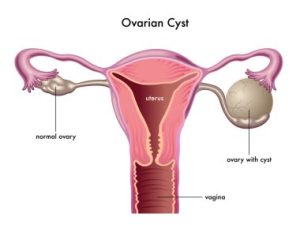
Considerations before starting an exercise routine
Assessing Severity and Type
Assessing the severity and type of ovarian cyst is crucial when considering whether one can engage in exercise while dealing with this condition. Ovarian cysts vary widely in size and nature, ranging from small, fluid-filled sacs to larger, more complex structures. In some cases, ovarian cysts may cause mild discomfort or go unnoticed, while others can lead to significant pain and complications.
It is imperative for individuals with ovarian cysts to undergo thorough medical evaluations to determine the specific characteristics of their cysts, such as size, location, and whether they are functional or pathological. While some women with small, uncomplicated cysts may be able to participate in moderate exercise, those with larger or more complex cysts may need to modify their activities or refrain from certain exercises altogether to avoid exacerbating symptoms or causing harm.
Consultation with Healthcare Professionals
When faced with the question of exercising with an ovarian cyst, seeking consultation with healthcare professionals becomes paramount for personalized guidance and recommendations. Ovarian cysts can vary in size and symptoms, and consulting with a healthcare professional, such as a gynecologist or a primary care physician, ensures an accurate assessment of the individual’s health status.
These professionals can consider factors such as the type and size of the cyst, the presence of any associated symptoms, and the overall health of the individual. Through open communication, patients can discuss their fitness goals, concerns, and any potential limitations. Healthcare professionals are well-equipped to provide tailored advice on exercise modifications, intensity levels, and specific activities that may be safe and beneficial. This collaborative approach ensures that individuals can make informed decisions about incorporating exercise into their routine while taking their ovarian cyst into account.
Effective Pain Management Strategies
Effective pain management strategies for individuals dealing with an ovarian cyst can significantly improve their overall well-being and enable them to engage in regular exercise. Firstly, over-the-counter pain relievers such as ibuprofen or acetaminophen can be used under the guidance of a healthcare professional to alleviate discomfort.
Additionally, applying heat to the lower abdomen through hot water bottles or warm baths can provide relief by relaxing tense muscles. Incorporating gentle exercises like walking or yoga into one’s routine can help maintain flexibility and reduce stress, but it’s crucial to consult with a healthcare provider before starting any exercise program. They can provide personalized advice based on the severity and type of the ovarian cyst. Ultimately, a holistic approach that combines medical guidance, pain management, and appropriate exercise can contribute to a more balanced and comfortable lifestyle for those with ovarian cysts.
Recommended Exercises
Low-Impact Exercises
Walking
Walking can be a beneficial form of exercise for individuals with an ovarian cyst, provided that they listen to their bodies. While vigorous activities may exacerbate symptoms or cause discomfort, walking is a low-impact exercise that can help maintain overall fitness and promote well-being.
Engaging in regular walks can improve circulation, reduce stress, and enhance mood, which are essential factors in supporting the body’s natural healing processes. Customized advice from medical professionals can help tailor an exercise plan that addresses individual needs and minimizes the risk of complications.
Swimming
Swimming can be a beneficial form of exercise for individuals with an ovarian cyst. The buoyancy of water reduces the impact on joints, making swimming a low-impact exercise that is gentle on the body. The rhythmic movements involved in swimming can help improve cardiovascular health, strengthen muscles, and enhance flexibility.
However, it is crucial for individuals with an ovarian cyst to receive personalized advice from their healthcare professional, as the intensity and type of exercise may vary based on the size and symptoms of the cyst. Additionally, proper swimwear and hygiene practices should be observed to prevent infections, ensuring a safe and enjoyable swimming experience while managing an ovarian cyst.
Cycling
Cycling can be a suitable form of exercise for individuals with an ovarian cyst, but it is essential to approach it with caution and consider individual comfort and tolerance levels. While cycling is generally a low-impact activity that is easy on the joints, the presence of an ovarian cyst may cause discomfort or pain, depending on the size and location of the cyst.
Listening to one’s body and being mindful of any signs of discomfort during cycling is crucial, and individuals should be ready to adjust their intensity or choose alternative exercises if needed. Regular communication with a healthcare provider will help in managing the ovarian cyst and ensuring that the chosen exercise regimen aligns with the individual’s overall health and well-being.

Core-Strengthening Exercises
Pelvic Tilts
Pelvic tilts are a gentle and effective exercise that can be considered for individuals dealing with an ovarian cyst. These movements involve tilting the pelvis forward and backward while lying on the back, engaging the core muscles and promoting flexibility in the lower back.
When performed with a controlled and mindful approach, pelvic tilts can help alleviate discomfort associated with ovarian cysts by reducing tension in the pelvic region and enhancing blood circulation. While pelvic tilts can be beneficial for some, individual cases may vary, and a tailored approach to exercise should be discussed with a medical professional to ensure safety and appropriateness based on the specific circumstances of the ovarian cyst.
Pelvic Floor Exercises
Pelvic floor exercises, often recommended for their benefits in improving bladder control and supporting reproductive health, can be cautiously incorporated into a fitness routine even if one is dealing with an ovarian cyst. These exercises primarily target the muscles that support the pelvic organs, including the uterus, bladder, and rectum.
While individual cases may vary, gentle pelvic floor exercises such as Kegels can help strengthen the pelvic muscles without putting excessive strain on the abdomen. It’s crucial, however, to consult with a healthcare professional before embarking on any exercise regimen, especially if there is a known ovarian cyst. They can provide personalized advice, taking into account the specific characteristics of the cyst and the individual’s overall health, to ensure that the chosen exercises are safe and beneficial in the given context.

Modified Planks
Modified planks can be a beneficial exercise for individuals dealing with an ovarian cyst, offering a low-impact yet effective way to engage the core muscles without putting excessive strain on the abdominal region. Instead of the traditional plank position that requires the body to be in a straight line from head to heels, a modified version involves balancing on the forearms and knees, alleviating pressure on the lower abdomen. This variation allows individuals with ovarian cysts to strengthen their core without exacerbating discomfort.
Flexibility Exercises
Yoga
Engaging in yoga can be a beneficial and gentle form of exercise for individuals with an ovarian cyst, as long as the practice is approached mindfully and with awareness of one’s body. Yoga emphasizes controlled movements, deep breathing, and relaxation techniques, which can help alleviate stress and tension in the pelvic area.
Certain yoga poses may need to be modified or avoided to prevent discomfort or exacerbation of symptoms. Gentle stretches, restorative poses, and mindfulness practices can contribute to overall well-being and may provide relief for those with ovarian cysts. It is essential to prioritize individual comfort and listen to the body, adapting the practice to personal needs and limitations while under the guidance of a healthcare provider.
Pilates
Engaging in Pilates can be a suitable form of exercise for individuals with ovarian cysts, as it focuses on low-impact movements that promote core strength, flexibility, and overall body awareness. Pilates exercises emphasize controlled and precise movements, making it gentler on the body compared to high-impact workouts.
This can be particularly beneficial for those with ovarian cysts, as vigorous activities may exacerbate discomfort or pain. Pilates routines often include exercises that target the pelvic floor and deep abdominal muscles, which can help improve posture and provide support to the abdominal region.
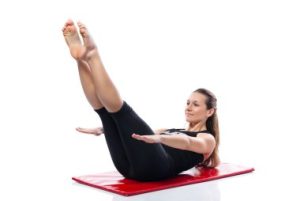
Aerobic Exercises
Elliptical Training
Elliptical training can be a suitable exercise option for individuals dealing with an ovarian cyst, offering a low-impact and gentle cardiovascular workout. The elliptical machine provides a smooth, fluid motion that minimizes stress on the joints, making it an ideal choice for those with abdominal discomfort or pelvic issues, including ovarian cysts.
This form of exercise helps improve cardiovascular fitness, leg strength, and overall stamina without subjecting the body to high-impact movements. Personalized advice can ensure that the chosen exercise is appropriate for the individual’s specific health situation and may even contribute to the overall management of the cyst.
Low-Intensity Aerobics
Low-intensity aerobics can be a beneficial form of exercise for individuals dealing with an ovarian cyst. Engaging in activities such as walking, swimming, or gentle cycling can help promote cardiovascular health without placing excessive strain on the abdominal area. These low-impact exercises contribute to improved blood circulation, which may aid in reducing inflammation and promoting overall well-being.
It’s essential, however, to consult with a healthcare professional before starting any exercise regimen, as individual cases may vary. By incorporating low-intensity aerobics into a routine, individuals with ovarian cysts can potentially manage stress, maintain a healthy weight, and enhance their overall fitness levels, while minimizing the risk of exacerbating their condition. Always prioritize personal well-being and seek guidance from healthcare providers to ensure a safe and suitable exercise plan.
Exercises to Avoid
High-Impact Exercises
Engaging in high-impact exercises with an ovarian cyst requires careful consideration, the nature of high-impact exercises, such as running or intense aerobics, may exacerbate symptoms or discomfort associated with ovarian cysts. These cysts, fluid-filled sacs that can develop on the ovaries, vary in size and may cause pelvic pain or discomfort. Low-impact exercises, such as walking, swimming, or gentle yoga, are often recommended for individuals with ovarian cysts, as they can help maintain fitness without putting excessive strain on the pelvic region.
Heavy Lifting and Strenuous Activities
Engaging in heavy lifting and strenuous activities while dealing with an ovarian cyst requires careful consideration of individual circumstances and medical advice. Individuals with ovarian cysts should be cautious with activities that involve heavy lifting or intense physical strain, as these actions could potentially exacerbate symptoms or lead to complications. In some cases, low-impact exercises such as walking, swimming, or gentle yoga may be recommended, while high-impact or strenuous activities might need to be modified or temporarily avoided to ensure the well-being of the individual.
Abdominal Exercises
Abdominal exercises can be beneficial for strengthening the core muscles, but it’s essential to adapt the workout routine to accommodate the specific circumstances of an ovarian cyst. Some individuals with ovarian cysts may experience discomfort or pain during certain movements, making it crucial to avoid exercises that exacerbate these symptoms.
Low-impact exercises such as gentle yoga, pelvic tilts, and modified abdominal exercises may be more suitable options. Always prioritize communication with your healthcare provider to ensure a safe and tailored approach to exercise that aligns with your individual health condition. Regular check-ups and adjustments to your fitness routine based on medical advice can contribute to overall well-being while managing an ovarian cyst.
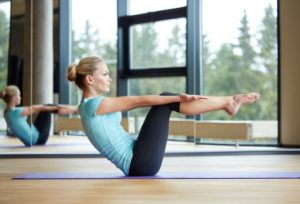
Precautions and Tips
Monitoring Pain Levels During Exercise
Monitoring pain levels during exercise is crucial when dealing with conditions such as an ovarian cyst. Engaging in physical activity with an ovarian cyst requires careful attention to the body’s signals to avoid exacerbating discomfort or causing harm. Pain can serve as a valuable indicator, helping individuals gauge the intensity and suitability of their chosen exercise regimen.
Listening to the Body and Adjusting Intensity
Listening to your body and adjusting the intensity of your exercise routine is crucial when dealing with an ovarian cyst. As individuals navigate the challenges posed by this condition, tuning into one’s body becomes paramount. Ovarian cysts can cause discomfort and varying levels of pain, making it essential to engage in exercises that are gentle and accommodating. Paying close attention to any signs of strain or discomfort is key, and modifying the intensity accordingly can prevent exacerbation of symptoms.
Gradual Progression in Exercise Routines
Gradual progression in exercise routines is essential for individuals navigating the challenges of exercising with an ovarian cyst. While physical activity is generally beneficial for overall health, it becomes crucial to adopt a careful and incremental approach when dealing with specific medical conditions such as ovarian cysts.
Incorporating gentle exercises like walking, swimming, or yoga can be a suitable starting point, allowing individuals to gauge their comfort levels and monitor any potential discomfort. As one’s tolerance and strength improve, the exercise intensity and duration can be gradually increased.
Regular Check-ups and Communication with Healthcare Providers
Regular check-ups and open communication with healthcare providers play a crucial role in managing health conditions such as ovarian cysts, especially when considering exercise. Consistent monitoring through routine examinations allows healthcare professionals to track the cyst’s size, changes, and potential complications.
Additionally, maintaining a transparent dialogue with your healthcare provider ensures personalized advice on exercise regimens. While some individuals with ovarian cysts can engage in moderate physical activity, it is essential to consult with a healthcare professional to determine the appropriateness of specific exercises.
Regular check-ups enable healthcare providers to tailor recommendations based on the individual’s overall health, the nature of the cyst, and potential risks. This proactive approach fosters a collaborative effort between patients and healthcare professionals, promoting holistic well-being and informed decision-making regarding exercise and lifestyle choices.
Case-by-Case Considerations
Pregnancy and Ovarian Cysts
Navigating the complexities of pregnancy with ovarian cysts requires careful consideration. Maternal well-being hinges on understanding how these cysts may impact gestation. Hormonal fluctuations and the potential for complications necessitate vigilant monitoring. Balancing the health of both mother and baby involves tailoring prenatal care to the unique circumstances presented by ovarian cysts. Expectant mothers often seek guidance on managing discomfort, and healthcare providers emphasize the significance of individualized plans for a safe and healthy pregnancy.
Polycystic Ovary Syndrome (PCOS) and Exercise
Crafting an exercise regimen for individuals with Polycystic Ovary Syndrome (PCOS) necessitates an understanding of the condition’s nuances. Exercise emerges as a key player in managing PCOS symptoms such as irregular periods and insulin resistance. Tailored fitness routines, combining cardiovascular and strength training, often prove effective. Striking the right balance is crucial, as excessive exercise can exacerbate hormonal imbalances. Empowering those with PCOS involves promoting a holistic approach to fitness, encouraging not just physical activity, but also mindful wellness practices.
Surgical Interventions and Post-Operative Exercise Plans
After surgical interventions, a thoughtful approach to post-operative exercise plans is imperative for optimal recovery. Patients undergoing procedures require individualized guidance based on the type of surgery and their overall health. Post-surgery, rehabilitation exercises play a pivotal role in restoring strength and mobility. Gradual progression and close monitoring ensure a safe recovery journey. Collaborative efforts between patients and healthcare providers are crucial to tailoring exercise plans that align with the unique demands of each surgical intervention.
FAQ: Can You Exercise with an Ovarian Cyst?
Q1: Is it safe to exercise if I have an ovarian cyst?
A1: In most cases, yes. Gentle exercises are generally safe and may even help manage symptoms. However, it’s crucial to consult your healthcare provider for personalized advice.
Q2: What types of exercises are suitable for someone with an ovarian cyst?
A2: Low-impact exercises like walking, swimming, and yoga are often recommended. These activities are less likely to strain the pelvic area and can provide relief.
Q3: Can intense workouts worsen ovarian cyst symptoms?
A3: High-intensity exercises may increase discomfort, so it’s advisable to avoid strenuous activities. Listen to your body and modify your routine based on your comfort level.
Q4: Are there specific exercises that should be avoided with an ovarian cyst?
A4: Exercises that put excessive strain on the pelvic region, such as heavy lifting or intense abdominal workouts, may be best avoided. Consult your doctor for personalized guidance.
Q5: Can exercise help in managing ovarian cyst pain?
A5: Gentle exercises can sometimes alleviate pain by improving blood flow and reducing stress. However, it’s essential to prioritize your comfort and not push yourself too hard.
Q6: Should I inform my fitness instructor about my ovarian cyst?
A6: Yes, it’s a good idea to inform your fitness instructor about any health conditions, including ovarian cysts. They can help modify exercises and provide alternatives to ensure your safety.
Q7: Can exercise prevent the development of ovarian cysts?
A7: While exercise is beneficial for overall health, it’s not a guaranteed preventive measure for ovarian cysts. Regular exercise may contribute to a healthy lifestyle, but individual factors vary.
Q8: Is there a specific time in my menstrual cycle when exercising with an ovarian cyst is more comfortable?
A8: Some women find that symptoms fluctuate during their menstrual cycle. Light exercises may be more comfortable during the times when cyst-related discomfort is less pronounced.
Q9: How often should I exercise if I have an ovarian cyst?
A9: Consistency is key. Engage in moderate exercises regularly, but be attentive to your body. If you experience increased pain or discomfort, consult your healthcare provider.
Q10: Can I engage in core exercises with an ovarian cyst?
A10: It’s advisable to avoid intense core exercises that may strain the abdominal area. Opt for gentler alternatives like pelvic tilts or modified yoga poses, and consult your healthcare provider for guidance.
Conclusion
In conclusion, while it is generally advisable to consult with a healthcare professional before engaging in any exercise regimen, it is often possible to continue exercising with an ovarian cyst. The type, size, and symptoms of the cyst should be taken into consideration, and modifications to the workout routine may be necessary.
Gentle exercises such as walking, swimming, and yoga can be beneficial, promoting overall well-being and potentially aiding in symptom management. However, it is crucial to prioritize one’s health and seek guidance from a medical professional to ensure that any physical activity is safe and appropriate for individual circumstances. Regular communication with a healthcare provider will help tailor an exercise plan that supports both ovarian cyst management and overall fitness goals.